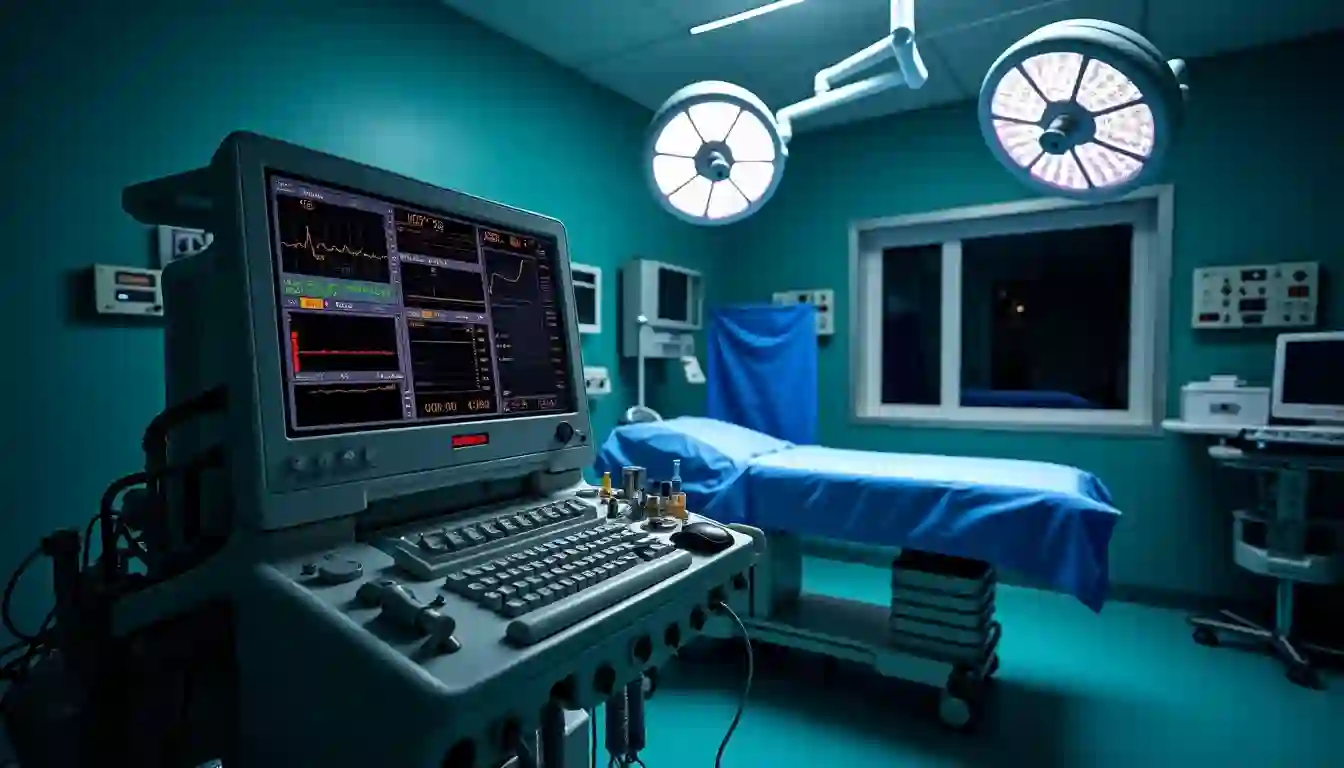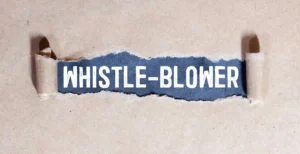As a Nashville anesthesia errors lawyer, I know that medication errors claim 7,000 to 9,000 American lives each year, and much of these deaths stem from anesthesia mistakes during surgery. We have a long way to go, but we can build on this progress in modern medicine, yet anesthesia-related deaths still impact roughly 1 in 100,000 patients.
Nashville’s anesthesia errors have shown me how these numbers transform into personal tragedies. Studies reveal that communication breakdowns lead to 43% of anesthesia-related malpractice claims. Medical staff never provided vital information in 31% of cases and failed to review it properly in 15% of instances. Your rights and options become a vital part of moving forward if you or someone you love faces complications from anesthesia errors in Nashville.
This piece explains the warning signs of anesthesia errors and outlines the legal steps you can take to protect your rights in Nashville.

Understanding Anesthesia Errors in Nashville
Anesthesia errors continue to worry medical facilities in Nashville. These medication mistakes cost the U.S. healthcare system more than $3 billion each year. Modern technology hasn’t eliminated these incidents that still happen too often.
Common types of errors
The Anesthesia Incident Reporting System has spotted several dangerous errors that risk patient safety. Wrong drug administration and dosing top the list of adverse incidents. Equipment failures also lead to many anesthesia-related complications.
The most dangerous errors include:
- Wrong drug doses that can cause breathing problems or heart failure
- Poor monitoring of patients throughout their procedures
- Damage to the windpipe from wrong intubation methods
- Wrong use or breakdown of equipment
- Missing important details in patient medical records
A newer study shows doctors make medication errors in 1 out of 211 anesthesia procedures. Drug administration mistakes happen in about 0.0075% of cases. Wrong doses and drug mix-ups each make up 20% of these errors.

Recent statistics in Tennessee
Tennessee’s anesthesia-related incidents paint a troubling picture. Research published in Anesthesiology shows 2,200 people died from anesthesia-related causes between 1999 and 2005. Anesthesia directly causes about 34 deaths yearly and plays a role in 281 more deaths each year.
A study that looked at anesthesia errors from 2007 to 2014 found 17,116 reported incidents across the country. Teaching hospitals saw a 0.86% death rate, while other facilities reported 0.73%. The good news shows total errors dropped 44% from 2,483 in 2007 to 1,391 in 2014.
The Australian Healthcare Study revealed adverse events in 16.6% of hospital stays. Doctors could have prevented more than half these incidents. Among affected patients, 4.9% died and 13.7% ended up with permanent disabilities.
Latest data shows anesthesia awareness affects 1-2 patients per 1,000 procedures (0.1-0.2%). Patients who wake up during surgery often develop severe mental trauma, including PTSD and lasting anxiety.
Root cause analysis points to lack of knowledge, ignored procedures, medication errors, and poor team communication as the main culprits. The biggest problem shows 40% of all errors happen because staff mix up drug containers.
Warning Signs During Medical Procedures

The ability to spot anesthesia complications’ warning signs can save lives. Medical procedures require constant alertness to specific indicators that help medical staff intervene quickly when needed.
Physical symptoms to watch
Several physical symptoms need immediate medical attention. Patients should alert medical staff right away if they experience extreme itching, hives, or sudden swelling. These symptoms might point to an allergic reaction to anesthesia.
Breathing problems are a serious concern. Patients might experience:
- Shortness of breath or labored breathing
- Airway obstructions
- Inadequate ventilation
- Unusual changes in blood pressure or heart rate
Changes in cognitive function are vital indicators too. Memory loss, trouble concentrating, or extended confusion after surgery could point to potential complications. The medical team needs to watch older adults carefully because their brains need more time to recover from anesthesia.

Communication red flags
Poor communication between medical staff remains the biggest problem behind anesthesia-related incidents. Research shows that communication failures led to 70% of reported events, and 75% of these cases ended in patient death.
The most worrying communication breakdowns happen when:
- Staff never shares critical information (31% of cases)
- Staff doesn’t review provided information (15% of cases)
- Updates come too late (12% of cases)
- Details lack clarity or accuracy (11% of cases)
Communication problems get worse under certain conditions. The failure rate jumps to 32% in surgery alone, rises to 38% with both anesthesia and surgery teams, and reaches 50% in combined procedures.
There is another reason for concern when medical staff feels afraid to speak up about potential issues. This usually happens because they fear judgment or doubt their observations. Such delays can be fatal, especially with time-sensitive complications.
Clear communication becomes even more important in specific situations:
- Intraoperative events (34% of cases)
- Preoperative medical history discussions (27% of cases)
- Oxygen-related concerns (12% of cases)
- Post-surgery care planning (12% of cases)
The core team must stay alert about vital signs during procedures. They need to track respiratory rate, heart rate, blood pressure, and oxygen saturation levels. Turned-off or ignored monitoring equipment might miss critical alerts and lead to severe complications.
Patients and their families shouldn’t hesitate to speak up about their concerns. Quick detection and open communication with healthcare providers can stop small issues from becoming life-threatening problems.
Impact of Modern Technology on Anesthesia Safety

Modern medical facilities have seen amazing progress in anesthesia safety through new technology. These breakthroughs have changed how medical professionals monitor, record, and prevent anesthesia-related complications.
New monitoring systems
Patient vital sign monitoring has reached new heights with advanced technologies. The Philips ‘IntelliVue’ patient monitor uses smart algorithms to track vital signs live. This helps anesthesiologists spot and react to changes in patient condition quickly.
Non-invasive monitoring has made great progress. Doctors can now monitor cardiac output using blood pressure cuffs on fingers instead of invasive catheters. Brain autoregulation data comes from cerebral pulse oximetry without invasive procedures.
Capnography is a vital breakthrough that works better than clinical evaluation to detect breathing problems. Studies show it spots sedation-related apnea more accurately than clinicians. The American Society of Anesthesiologists now requires end-tidal capnography for general anesthesia and moderate or deep procedural sedation.
Digital record keeping
Electronic Medical Records (EMR) have transformed how we document anesthesia. These systems collect patient health data and share it smoothly with other clinicians. EMRs protect patient information better than paper records and let providers track care with special tools.
The Anesthesia Information Management Systems (AIMS) work as complete information hubs. They gather data from providers, monitors, and anesthesia workstations. These specialized networks deliver:
- Better information completion rates than handwritten records
- Improved patient identification and registration
- Reduced programming errors
- Faster response times
AI-assisted prevention
AI has become a powerful way to prevent anesthesia errors. It spots patterns in patient data that might show higher risk of complications. The systems record vital signs, medication doses, and key data automatically. This lets anesthesiologists focus on patient care.
New AI developments include:
- Automatic record-keeping and vital sign monitoring
- Spotting and stopping adverse events before they happen
- Custom prescription doses
- Live decision support for clinicians
A newer study, published by the, showed AI-enabled wearable cameras caught vial-swap errors with 99.6% sensitivity and 98.8% specificity. This technology adds another safety layer by checking medication accuracy before use.
Barcode scanning at the point of care shows promise. It could eliminate 17% of medication errors and 25.5% of potential adverse drug events. Electronic medication records and computerized physician order entry systems reduce medication errors, but they aren’t accessible to more people in anesthesia practices yet.
We have challenges to overcome with these new technologies. Managing data from various compatible devices remains tough. We also need to think about patient privacy, information security, and understanding how AI makes decisions.
Steps to Take After an Anesthesia Error
Quick action after an anesthesia error can prevent life-threatening complications. Medical errors kill between 44,000 and 98,000 patients each year. Much of these deaths come from medication-related incidents.
Immediate medical actions
When finding an anesthesia error, the primary caregiver must focus on direct patient care. A designated incident supervisor should then:
- Organize immediate assistance and assign specific tasks
- Verify the incident has ended with no risk of recurrence
- Coordinate with consultants, including neurologists and cardiologists
Research shows that 19% of medication errors in intensive care units pose life-threatening risks and end up needing additional life-sustaining treatments. Quick medical intervention becomes vital to minimize potential harm.
The Anesthesia Quality Institute (AQI) requires reporting any unintended events through their Anesthesia Incident Reporting System (AIRS). Medical professionals can submit reports anonymously or confidentially. This system aids proper investigation and prevents future incidents.

Documenting the incident
Documentation is a vital element to address anesthesia errors. Studies show that 84% of critical incidents get reported through hospital systems. Staff use paper forms (65%), oral reports (15%), and electronic databases (4%).
A complete documentation needs these vital steps:
- Record all details related to the surgical procedure
- Note names of involved medical professionals
- Document dates, times, and specific complications
- Preserve all equipment and supplies used during the procedure
Currently, 58.1% of critical incidents get detailed departmental analysis, which sometimes leads to permanent policy changes (6.5% of cases). Good documentation helps medical facilities spot patterns and prevent future errors.
The AIRS database has federal law protection through AQI’s status as a Patient Safety Organization (PSO). This protection will give a confidential and legally safe environment. Healthcare workers can report honestly without fear of legal problems.
Research shows that staff could have prevented 48% of anesthesia-related incidents. Good documentation helps identify areas that need improvement. Detailed records are a great way to get insights, especially since 24.5% of incidents lead to longer hospital stays, and 16% need urgent ICU transfers.
These incidents affect both patients and healthcare providers deeply. Patient trust often breaks down and medical professionals struggle with the memory for years. Accurate records aid proper investigation and ensure good follow-up care.
American hospitals spent $2.90 million per facility on serious medication errors in 1995. Healthcare facilities can reduce error rates by 17% through good documentation and quick action. This reduction means big cost savings.
Legal Rights of Nashville Anesthesia Error Victims
Your ability to get fair compensation after an anesthesia error depends on how well you understand your legal rights. Nashville residents have specific protections under Tennessee law. They must act quickly to protect their rights when medical mishaps occur.
Time limits for filing claims
Tennessee has strict deadlines for medical malpractice claims. You must file your case within one year from when you were injured or found out about the error. The statute of limitations starts when you become aware of the injury, not when the error happened.
Tennessee law has a vital provision called the “discovery rule.” This rule gives you up to one year to file after you find that there was an injury that wasn’t obvious right away. To cite an instance, see how complications from anesthesia might show up months after surgery. The one-year countdown starts from that date.
All the same, Tennessee’s statute of repose sets a firm three-year limit to file claims, whatever date you found the injury. Only two exceptions apply to this rule:
- Cases where healthcare providers fraudulently concealed information
- Cases where foreign objects were left inside patients during surgery
Types of compensation available
Nashville anesthesia error victims can seek both economic and non-economic damages. Economic damages cover real financial losses such as:
- Current and future medical expenses
- Lost wages and income opportunities
- Rehabilitation costs
- Long-term care requirements
Non-economic damages address how anesthesia errors affect you beyond money. These cover:
- Physical pain and suffering
- Emotional distress
- Loss of consortium
- Disability or disfigurement
- Reduced quality of life
Courts may award punitive damages in rare cases involving criminal behavior or substance abuse during operations. These extra compensations punish extreme misconduct and prevent similar incidents.
The amount you receive depends on several factors:
- How severe the injury is
- How it affects your daily life
- How long recovery takes
- Long-term effects
- Quality of evidence supporting your claim
Medical professionals estimate that anesthesia errors cost American hospitals $2.90 million each year. Proper legal representation helps victims recover damages that match their suffering and losses.
Your case becomes stronger when you keep detailed records of:
- Medical documentation
- Treatment expenses
- Lost income verification
- Expert medical opinions
- Witness statements
Note that insurance companies often try to reduce settlements. An experienced Nashville anesthesia errors lawyer can protect your rights throughout the legal process.

Conclusion
Nashville’s medical facilities still face serious problems with anesthesia errors. We have a long way to go, but we can build on this progress through better technology and monitoring systems. Patients need to stay alert about warning signs and communication problems during medical procedures.
Your Nashville attorney’s experience shows how good documentation and quick action after an anesthesia error can make a significant difference in your recovery and compensation. Tennessee laws offer clear paths to justice for victims, but strict time limits apply and cases need full preparation.
Medical facilities use AI-powered prevention tools and boosted monitoring systems to reduce errors. Your legal rights become vital when mistakes happen. Note that each case needs evaluation based on unique details, and early legal help often brings better results.
FAQs
Q1. What are the most common types of anesthesia errors? The most frequent anesthesia errors include incorrect drug administration or dosing, inadequate patient monitoring, improper intubation techniques, equipment malfunctions, and failure to properly review patient medical histories. Medication errors occur in approximately 1 in 211 anesthesia procedures.
Q2. How can patients recognize warning signs of anesthesia complications? Patients should be alert to symptoms such as extreme itching, hives, sudden swelling, breathing difficulties, unusual changes in blood pressure or heart rate, memory loss, difficulty concentrating, or prolonged confusion after surgery. It’s crucial to communicate any concerns to medical staff immediately.
Q3. How has modern technology improved anesthesia safety? Modern technology has significantly enhanced anesthesia safety through advanced monitoring systems, digital record-keeping, and AI-assisted prevention. These innovations include real-time vital sign tracking, non-invasive monitoring techniques, electronic medical records, and AI systems that can predict and prevent adverse events.
Q4. What steps should be taken immediately after an anesthesia error? After an anesthesia error, immediate medical intervention is crucial. The incident should be thoroughly documented, including all details of the procedure, names of involved medical professionals, and specific complications. The error should also be reported through proper channels, such as the Anesthesia Incident Reporting System.
Q5. What legal rights do anesthesia error victims have in Nashville? Nashville residents affected by anesthesia errors have the right to seek compensation for both economic and non-economic damages. However, they must file their claims within strict time limits – generally within one year from the date of injury or discovery of the error, with some exceptions. Victims can pursue compensation for medical expenses, lost wages, pain and suffering, and other related costs.
Conclusion: Contact Nashville Anesthesia Errors lawyer Timothy L. Miles Today
If you or a loved one were the victim of an Anesthesia Error in Nashville contact Timothy L. Miles, an Anesthesia Errors lawyer in Nashville, today for a free case evaluation. The call is free and so is the fee unless we win or settle you case so call today and see what a Nashville Anesthesia Errors attorney can do for you. (855-846-6529) or tmiles@timmileslaw.com (24/7/365),
Timothy L. Miles, Esq.
Law Offices of Timothy L. Miles
Tapestry at Brentwood Town Center
300 Centerview Dr. #247
Mailbox #1091
Brentwood,TN 37027
Phone: (855) Tim-MLaw (855-846-6529)
Email: tmiles@timmileslaw.com
Website: www.classactionlawyertn.com







